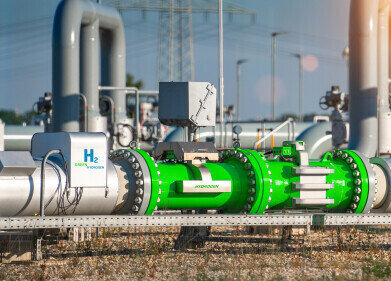Biofuel industry news
What Are Lubricants Used For?
Feb 13 2022
From petroleum refineries and gas drilling rigs to commuter vehicles and motorcycles, lubricants keep machines, engines and moving parts running smoothly. While different lubricants are used for different applications, all share the same core goal of maximising efficiency and minimising downtime.
Below, we take a closer look at the main goals of mechanical lubricants and how they’re used in a variety of industries.
-
Minimising friction
Lubricants create a protective barrier between moving parts, with the underlying aim to minimise friction. From bicycles and car engines to industrial conveyer belts and heavy-duty pumps used in oil refineries, minimising friction is critical to mechanical performance.
-
Reducing wear and deterioration
Wear and deterioration can drastically reduce mechanical performance and lead to bigger issues such as system-wide failure. By forming a protective barrier between moving parts, lubricants actively reduce wear and deterioration.
-
Preventing corrosion
Corrosion is a major challenge faced by mechanical operators. Studies suggest corrosion costs the oil and gas industry more than US$1.3 billion a year, with particularly high repair and replacement expenses for carbon steel assets.
While oil-based lubricants are an effective way to prevent corrosion, many operators are making the switch to spray-applied protective coatings. Designed to combat rust and extend the life of assets, these innovative products alloy with steel and coat it with a layer of phosphate-filled ceramic. A single coat offers ongoing protection, with minimal maintenance.
-
Reducing asset maintenance costs
Maintenance is a major expense for mechanical operators. Lubricants are used to proactively maintain equipment and extend the lifespan of assets. An effective asset maintenance should help companies maximise profits during growth phases. Similarly, it should maintain operational efficiency and reduce asset maintenance costs during periods of volatility.
-
Minimising breakdowns, mechanical failure and unplanned downtime
Unplanned downtime due to maintenance issues costs the average onshore oil and gas facility around US$7 million per day in lost revenue. The cost can be much higher for offshore facilities. Lubricants have a vital role to play when it comes to asset maintenance strategies.
Environmental concerns of lubricants
Not all lubricants are equal, especially when it comes to environmental credentials. When the risk of environmental contamination is high, for example in areas such as maritime ports and agricultural areas, it’s important to consider the ecological footprint of lubricants. Over the past few years, biobased lubricants have emerged as an affordable and eco-friendly solution. Find out more about the rapidly growing industry in ‘Using Vegetable Oil Additives to enhance the performance of petroleum products.’
Digital Edition
PIN 26.1 Feb/Mar 2025
March 2025
Analytical Instrumentation - Elemental Analysis for Quality and Process Control at Refineries, for Lubricants and Wear Metals in Engine Oils - Synthetic Lubricants: New Developments - Scaling...
View all digital editions
Events
Apr 08 2025 Birmingham, UK
Apr 08 2025 Kielce, Poland
Apr 08 2025 Ravenna, Italy
Apr 08 2025 Southampton, UK
Apr 08 2025 London, UK



















